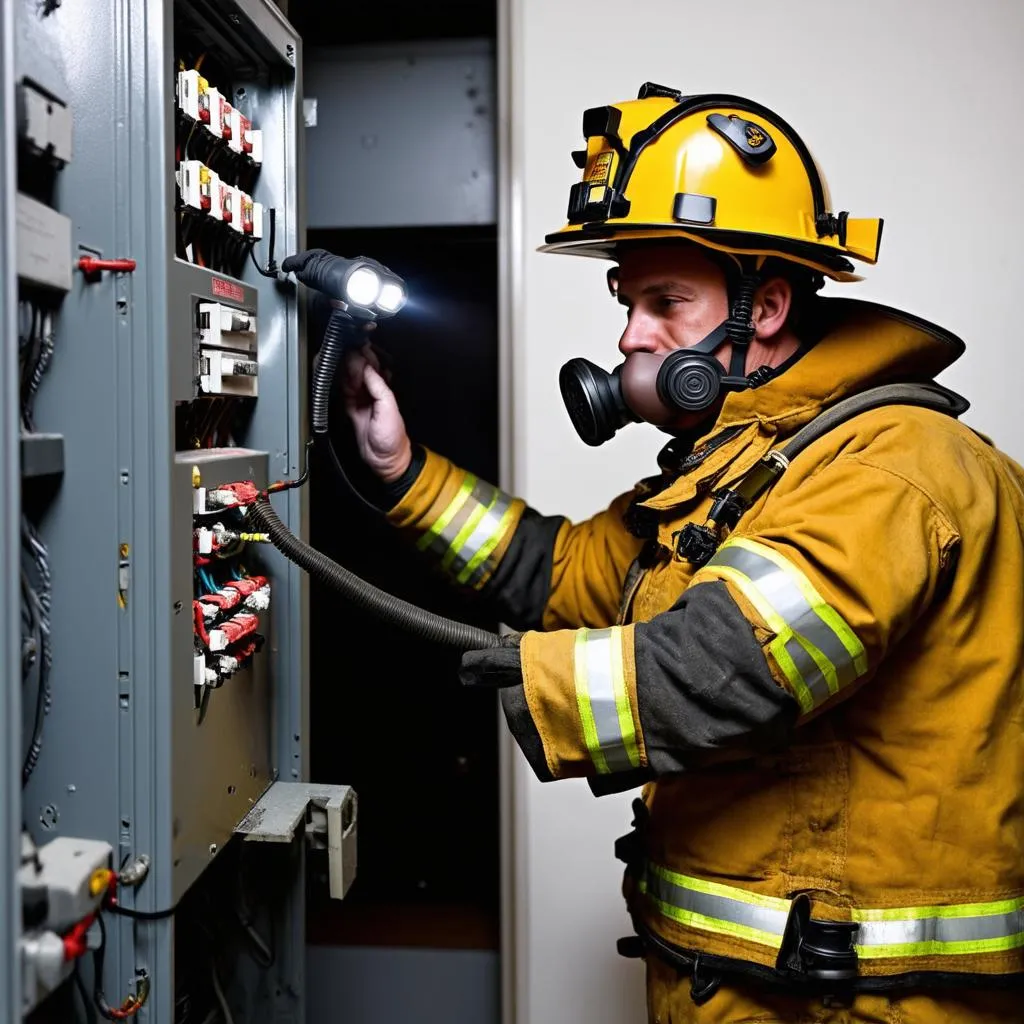Imagine this: you’re in a bustling hotel lobby in the heart of New York City, about to embark on a whirlwind sightseeing adventure. Suddenly, the fire alarm blares, and there’s a faint whiff of smoke in the air. Your mind races as you remember the fire safety briefing – avoid elevators at all costs! But why? Are elevator shafts really “magnets” for fire?
Debunking the Myth: It’s Not Magnetism, It’s the Flow
While elevator shafts aren’t magnetically attracting fire, they can unfortunately act as chimneys, rapidly drawing smoke and flames upward. This phenomenon is due to a combination of factors:
The Stack Effect: A Vertical Pathway
Elevator shafts are inherently vertical openings that run the height of a building. As hot air and smoke rise, they create a pressure difference, essentially turning the shaft into a giant chimney. This “stack effect” can pull smoke and fire upward with alarming speed, potentially spreading it to multiple floors.
Air Supply: Fueling the Flames
Elevator shafts, especially those with poorly sealed doors, can provide a steady supply of fresh air to a fire. This influx of oxygen can exacerbate the fire, increasing its intensity and rate of spread.
Safety First: Why Avoiding Elevators is Crucial
The rapid movement of smoke and fire through elevator shafts poses a significant risk to building occupants:
Smoke Inhalation: The Silent Killer
Smoke inhalation is a leading cause of fire-related deaths. The toxic fumes from a fire can quickly fill an elevator shaft, posing a deadly threat to anyone inside an elevator car.
Trapped in Transit: A Nightmare Scenario
Getting stuck in an elevator during a fire is a terrifying prospect. Not only are you trapped in a confined space, but you are also directly in the path of rising smoke and flames.
What to Do Instead: Safe Evacuation Strategies
Stairwells: Your Safest Bet
Always use designated stairwells for evacuation during a fire. Stairwells are typically enclosed and pressurized to resist smoke, providing a safer exit route.
Fire Safety Plans: Your Guide to Survival
Familiarize yourself with your building’s fire safety plan, including the location of fire exits, alarms, and extinguishers. Knowing what to do in an emergency can save lives.
 fire escape plan
fire escape plan
Beyond the Shaft: Other Fire Hazards in Buildings
While elevator shafts are a significant concern, it’s crucial to be aware of other potential fire hazards in buildings:
Electrical Systems: A Common Culprit
Faulty wiring, overloaded circuits, and malfunctioning appliances are common causes of fires. Be sure to have your electrical systems regularly inspected by a qualified electrician.
Combustible Materials: Fuel for the Fire
Upholstery, curtains, and other flammable materials can easily ignite and spread fire. Opt for fire-resistant materials whenever possible.
 firefighter inspecting electrical panel
firefighter inspecting electrical panel
Travel Safe, Explore Smart: Fire Safety Tips for Travelers
Whether you’re exploring the vibrant streets of Bangkok or relaxing on the beaches of Bali, fire safety should be a top priority. Here are some tips for a worry-free trip:
- Choose accommodations wisely: Opt for hotels with sprinkler systems, fire alarms, and clearly marked exits.
- Locate exits: Upon checking in, identify the nearest fire exits and familiarize yourself with evacuation routes.
- Pack a flashlight: Keep a flashlight handy in case of power outages during an emergency.
- Stay informed: Be aware of your surroundings and any potential fire hazards.
Remember, knowledge is power when it comes to fire safety. By understanding the risks and taking appropriate precautions, you can enjoy your travels with peace of mind.
For more travel safety tips and destination guides, visit travelcar.edu.vn. Your adventure awaits!